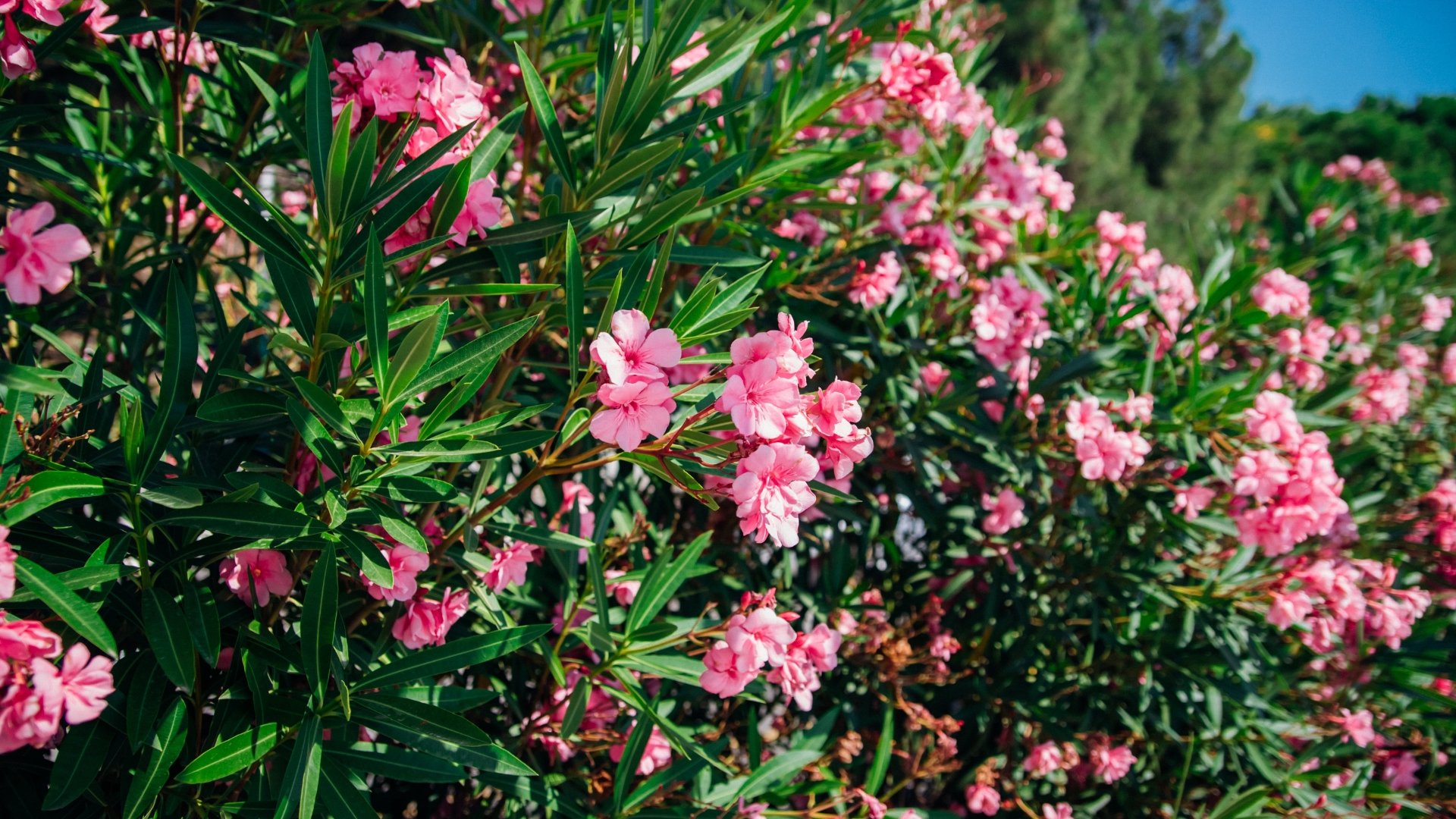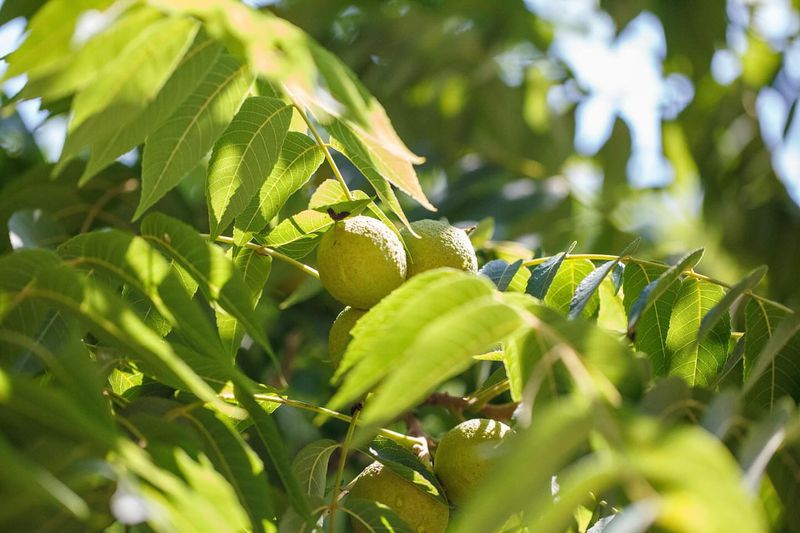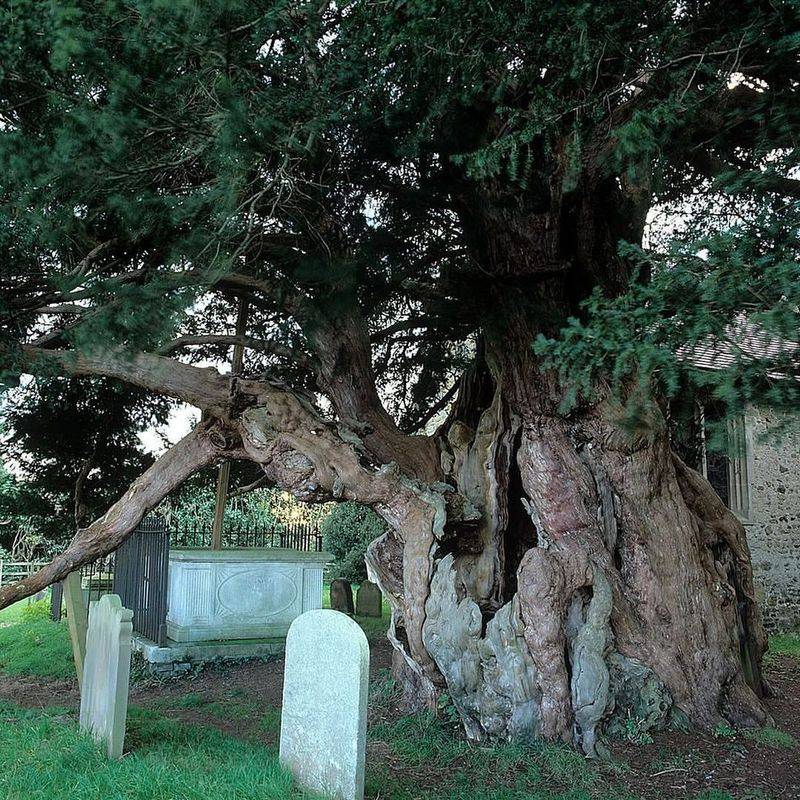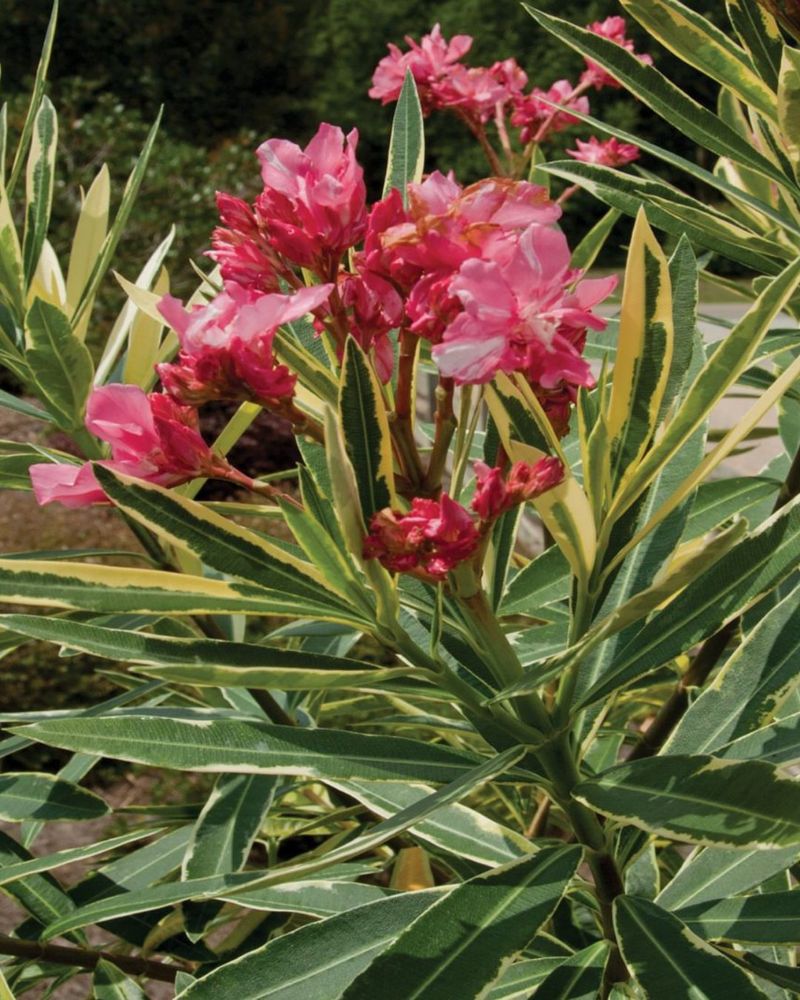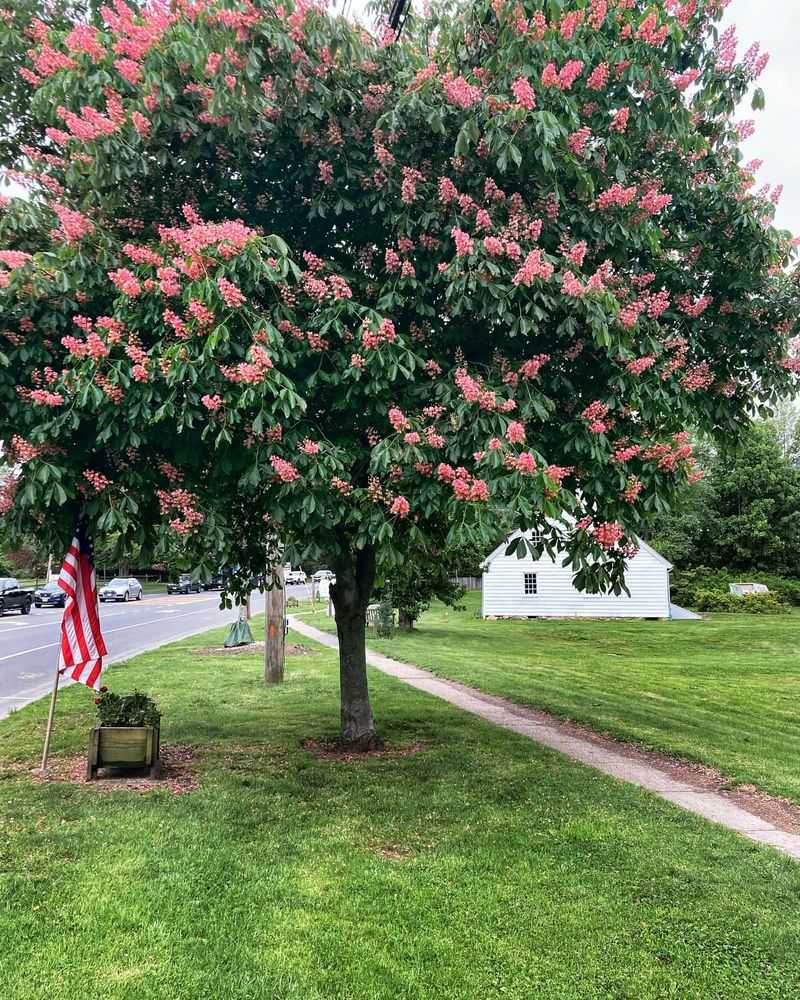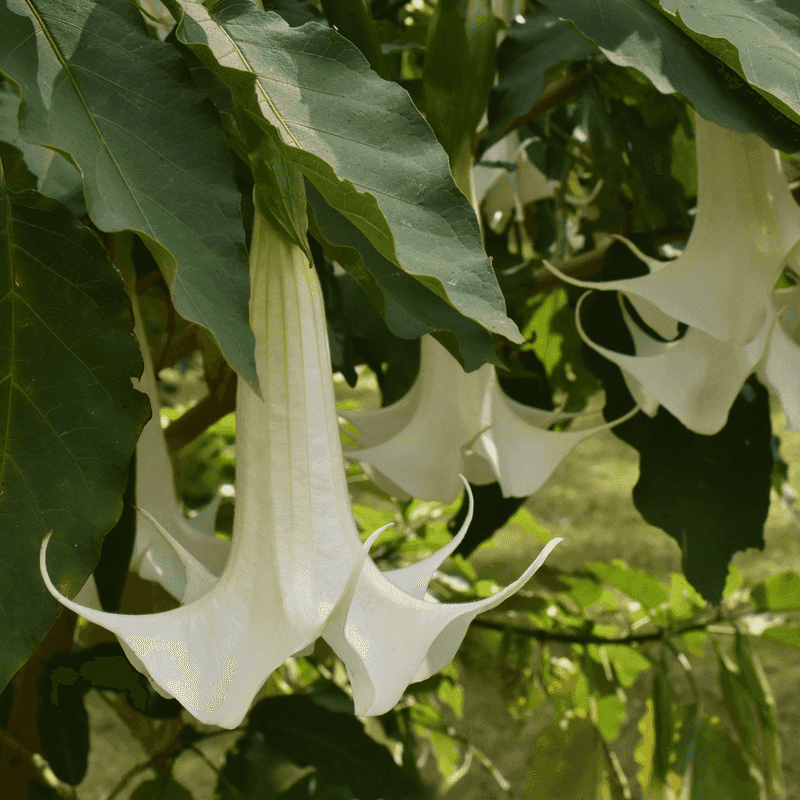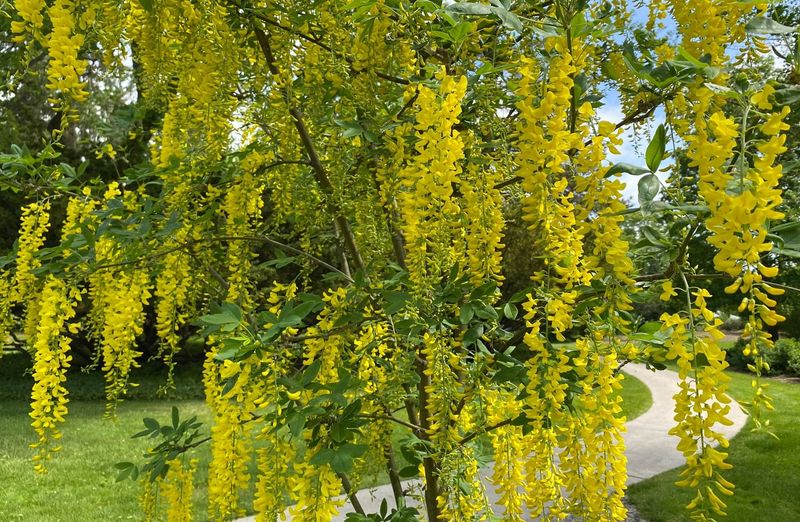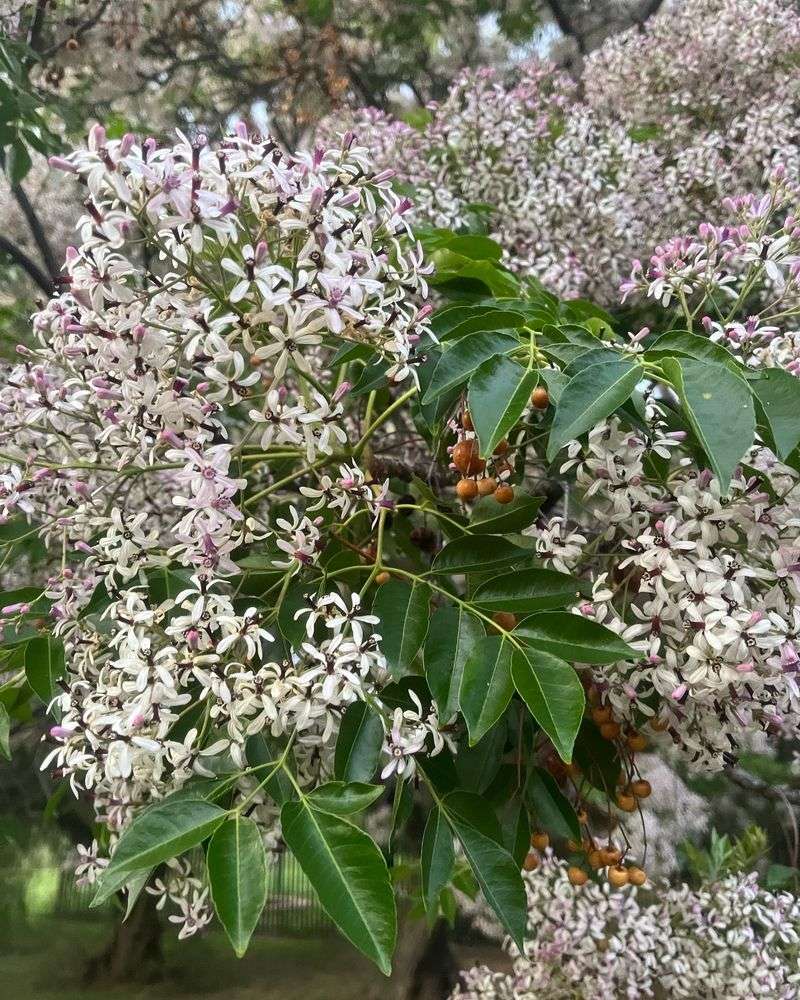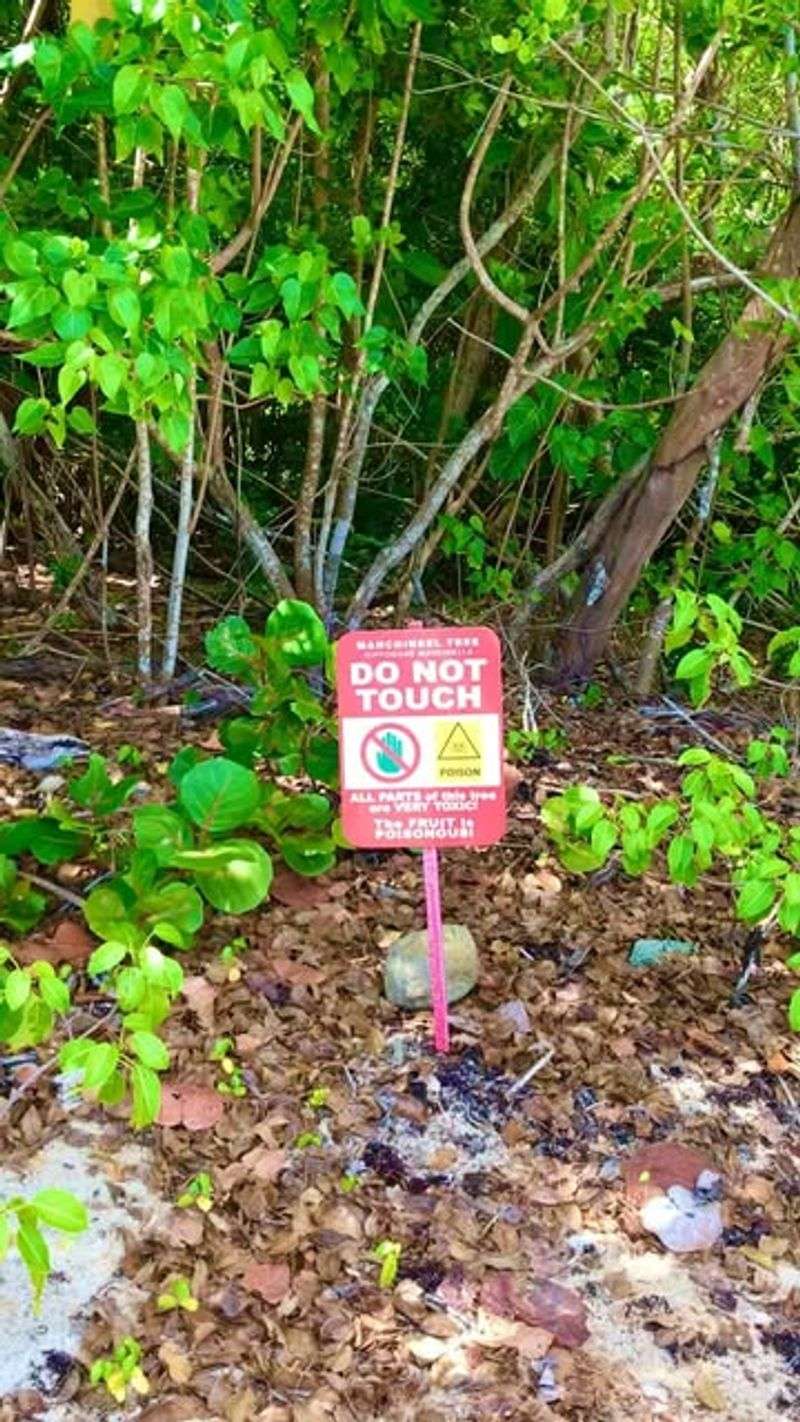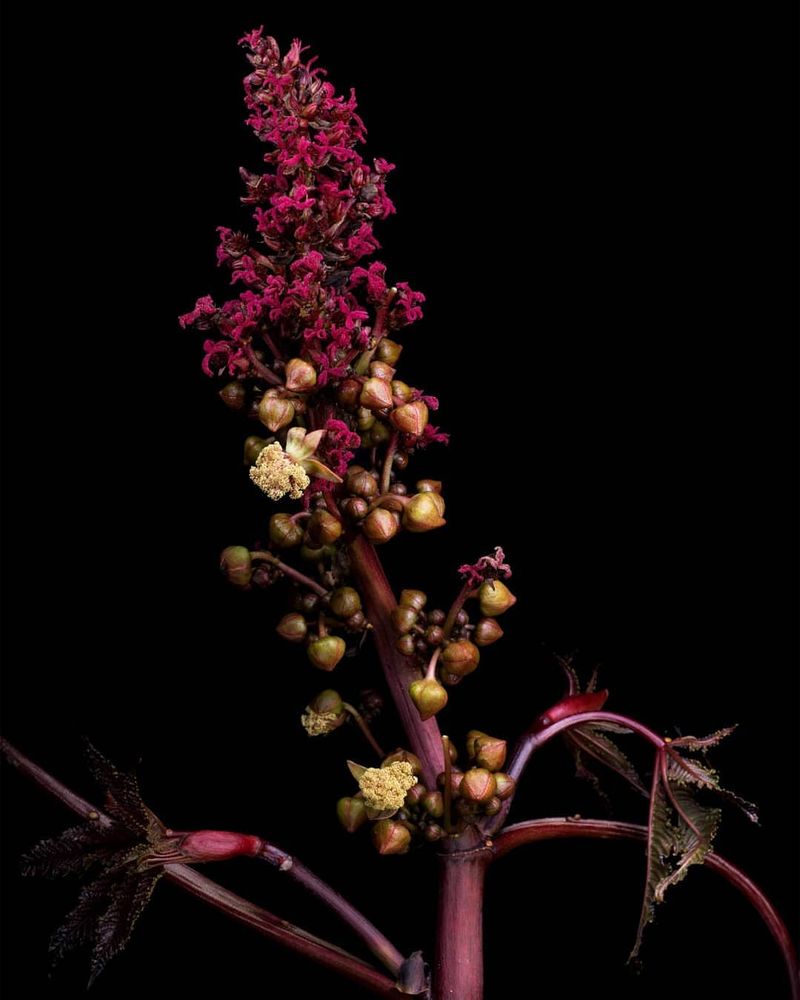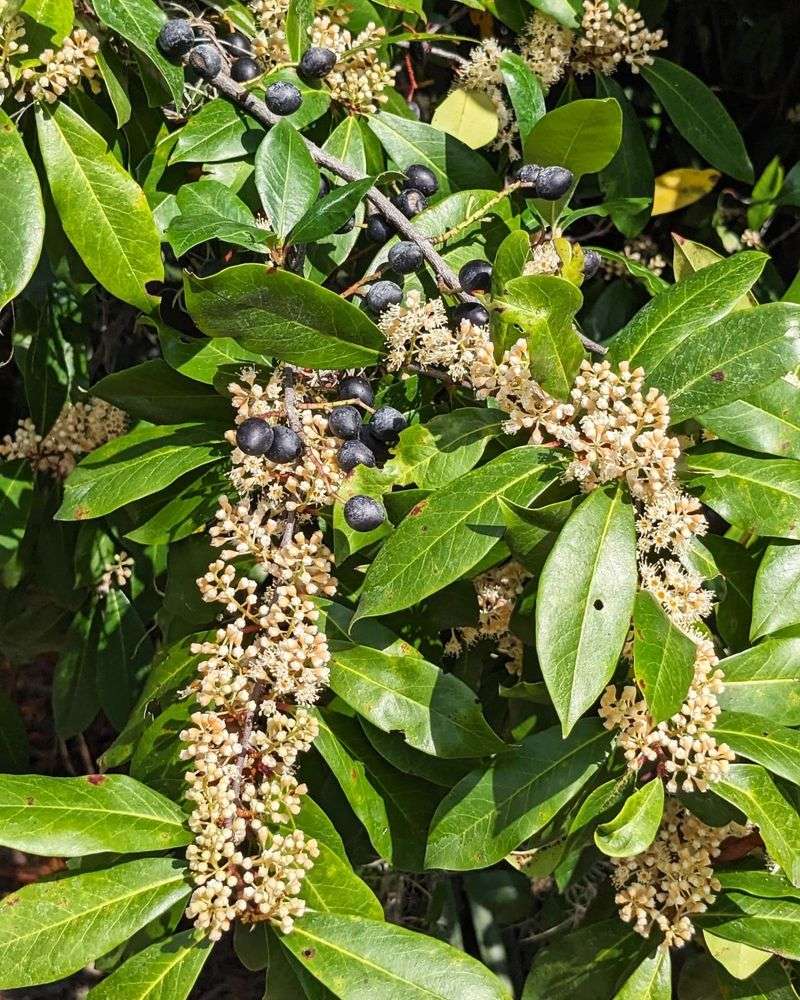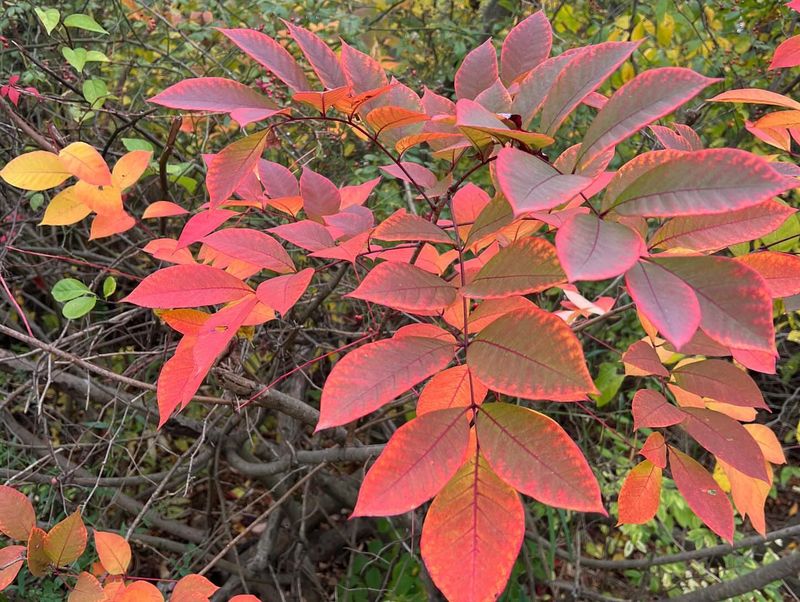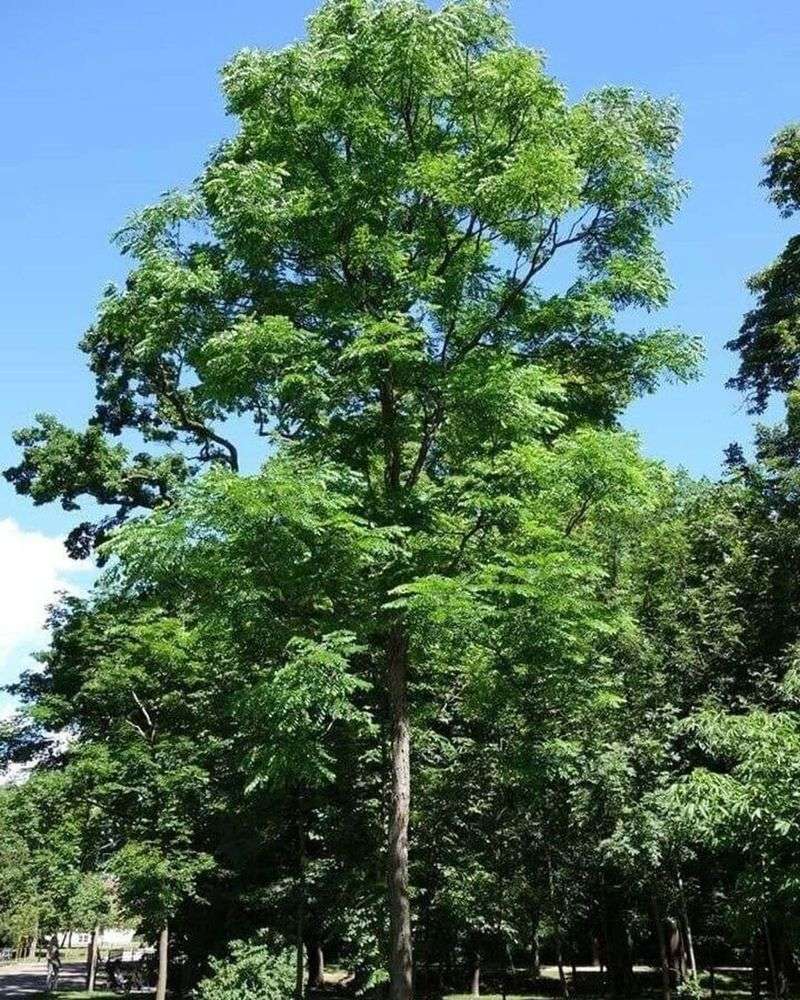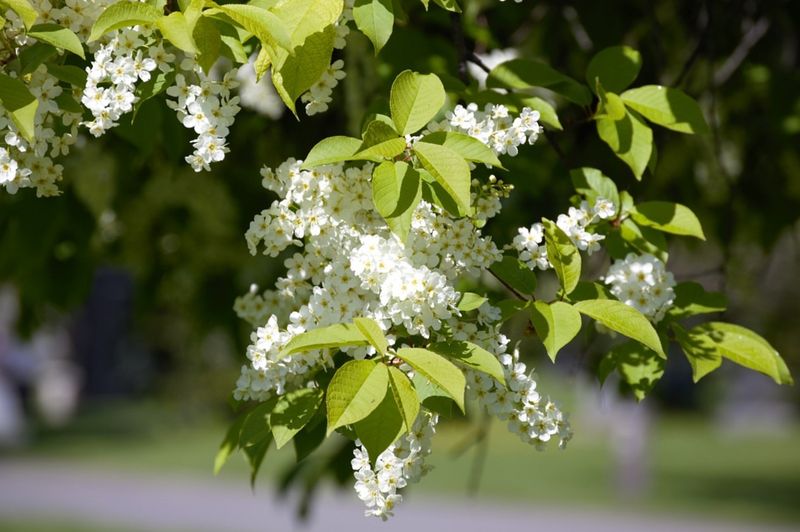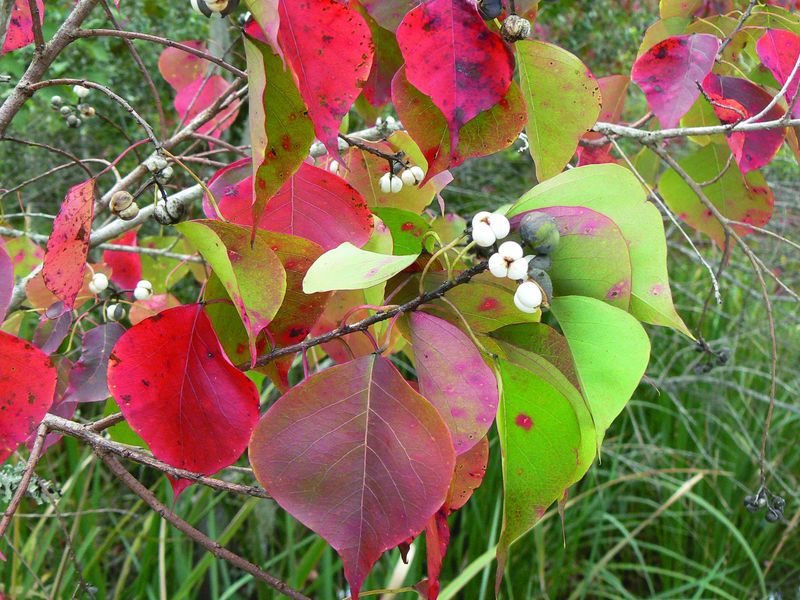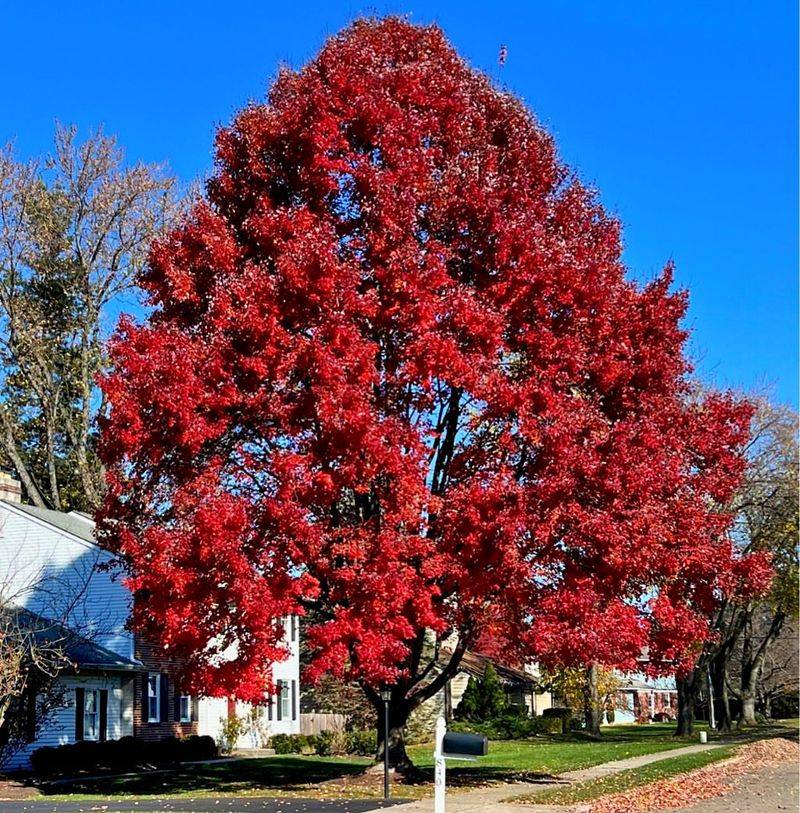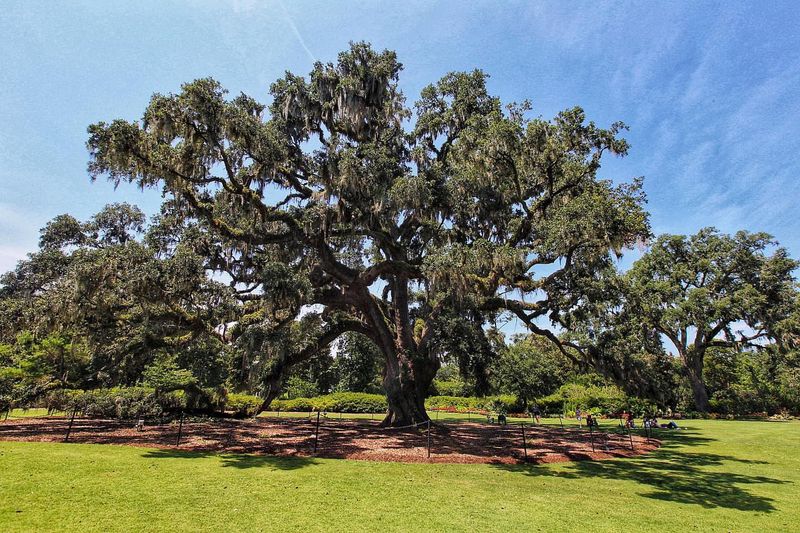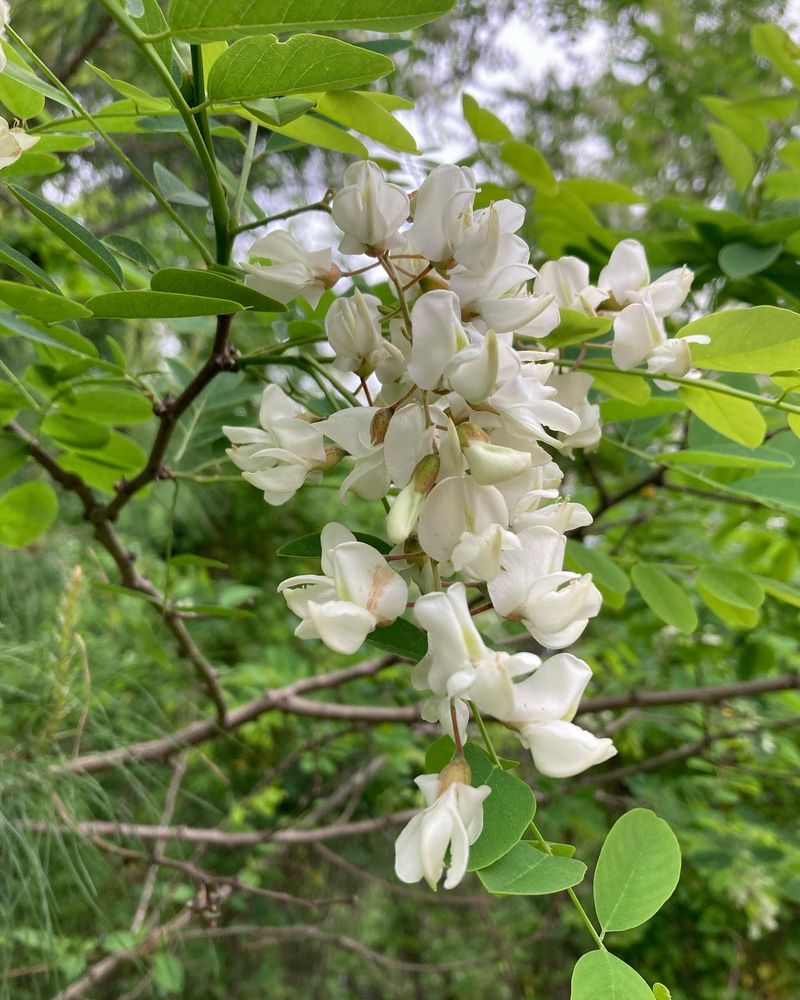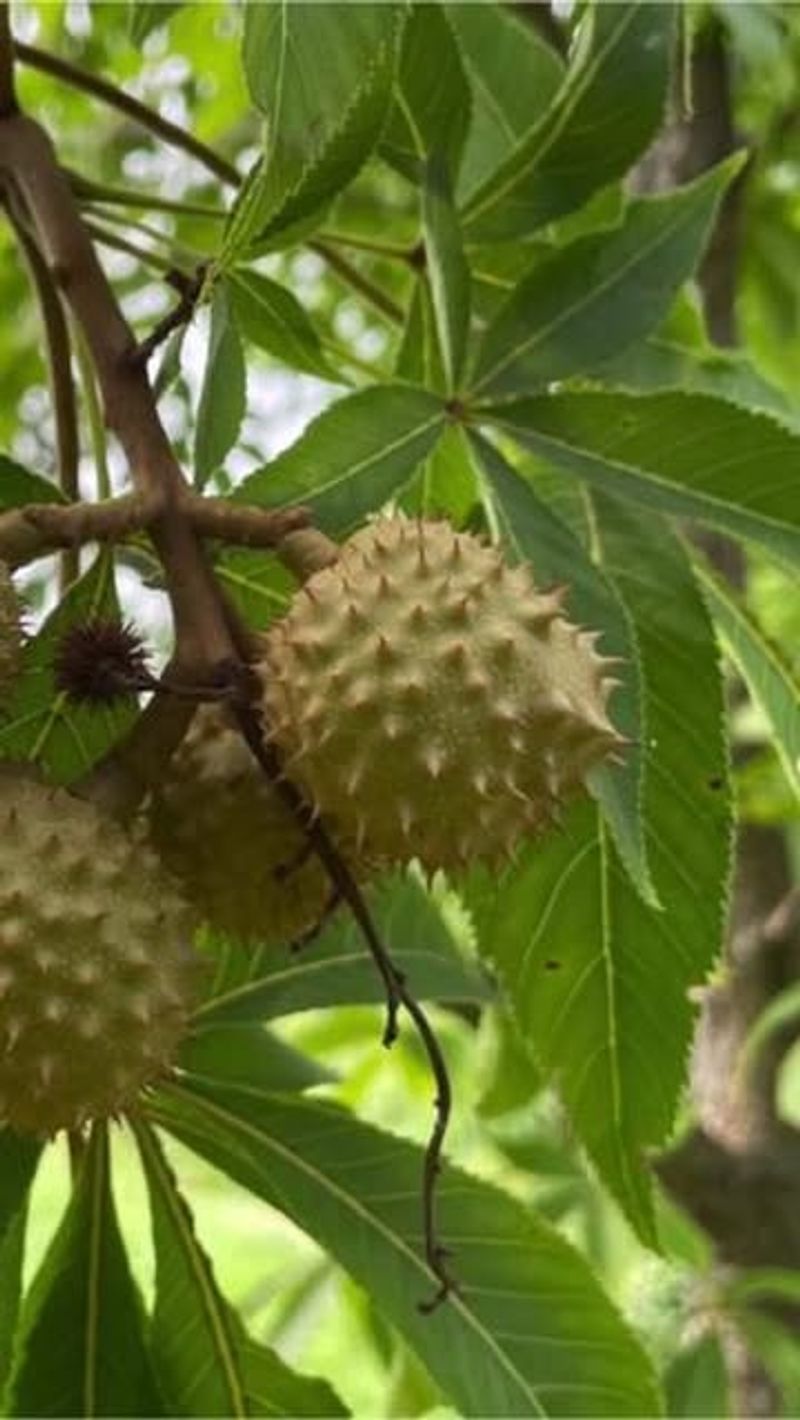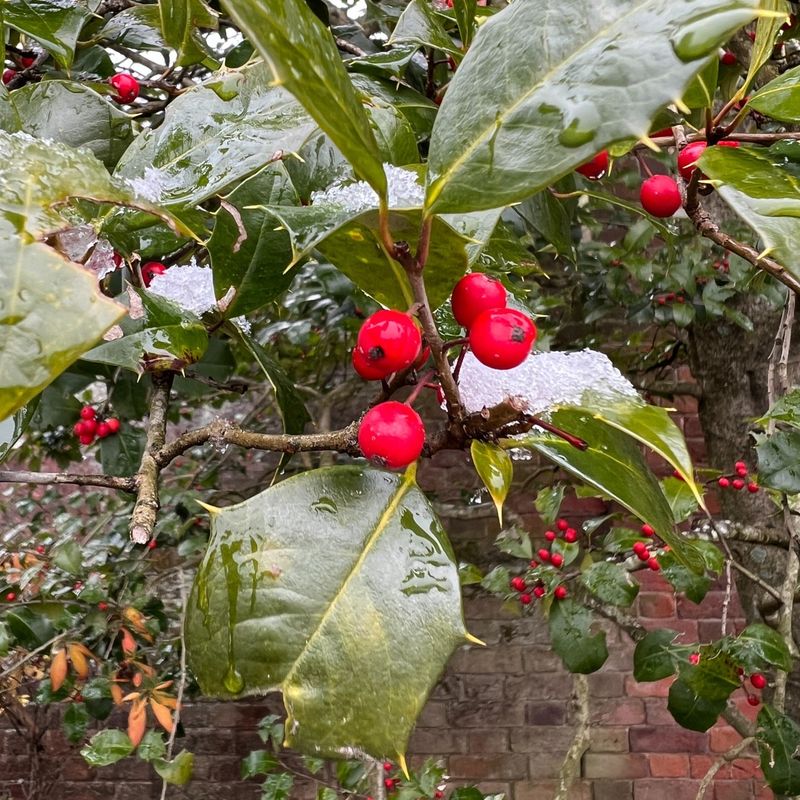You might be surprised how many common trees hiding in neighborhoods across the U.S. are actually toxic troublemakers. Some of these leafy offenders could already be hanging out in your yard, causing problems you didn’t even realize.
It’s like having a hidden danger that doesn’t shout but quietly affects your plants, pets, and family. Let’s uncover these toxic trees and figure out how to keep your outdoor space safe and thriving.
I’ll also share some better picks that bring all the beauty without the risks.
1. Black Walnut
Hidden beneath its valuable lumber lies a chemical called juglone that’s toxic to many plants. The roots spread this compound into the soil, killing nearby garden favorites like tomatoes and azaleas.
Most homeowners discover this problem too late, after landscaping investments wither mysteriously. While not directly harmful to humans, the tree creates dead zones where little can grow for years.
2. Yew
Every part of this evergreen contains deadly taxine alkaloids—except the fleshy red aril surrounding the seed. Just a handful of needles can kill a child or pet within hours of ingestion.
Despite these dangers, yews remain popular in landscaping for their deep green foliage and red berries. Symptoms of poisoning include difficulty breathing, trembling, and sudden cardiac arrest that often occurs with little warning.
3. Oleander
Gracing many southern landscapes, this flowering beauty hides a lethal secret. All parts contain cardiac glycosides so potent that ingesting just one leaf can be fatal to a child.
Smoke from burning oleander branches can even cause poisoning. The plant’s milky sap causes skin irritation upon contact. Despite these dangers, oleander continues to be planted for its drought resistance and showy blooms.
4. Horse Chestnut
Often confused with edible chestnuts, these ornamental trees produce nuts containing aesculin that can cause severe digestive distress. Children are particularly vulnerable as they might mistake the shiny brown seeds for something edible.
Fall is when problems typically arise, as the nuts drop and become playthings. Symptoms include nausea, muscle twitching, and in severe cases, paralysis. The leaves and flowers also contain toxic compounds.
5. Angel’s Trumpet
Grown for its spectacular drooping flowers, this small tree contains hallucinogenic alkaloids that can be deadly. Every part of the plant contains scopolamine and atropine, powerful compounds that affect the central nervous system.
Mere skin contact with sap can cause pupil dilation and blurred vision. Ingestion leads to hallucinations, confusion, and potentially fatal respiratory failure. Children attracted to the beautiful trumpet-shaped blooms are at particular risk.
6. Golden Chain Tree
The cascading yellow flowers make this European native a springtime showstopper, but beauty comes with risk. All parts contain cytisine, a nicotine-like alkaloid that causes severe vomiting and convulsions if ingested.
Children are particularly vulnerable to poisoning from the attractive seed pods that appear after flowering. Just two seed pods can cause life-threatening symptoms. Despite these dangers, the tree remains popular for its ornamental value.
7. Chinaberry
Fast-growing and drought-resistant, this invasive species tempts homeowners with its quick shade. The berries contain neurotoxins that affect the nervous system, causing weakness, seizures, and potential death when consumed.
Children are particularly at risk because the yellow fruits resemble small cherries. Birds eat the berries and spread seeds everywhere, creating unwanted saplings throughout neighborhoods. The tree’s aggressive root system also damages foundations and sewer lines.
8. Manchineel
Known as “the little apple of death,” this rare Florida native is considered one of the most dangerous trees in the world. Standing beneath it during rain can cause skin blistering as water carries toxic sap from leaves.
The innocent-looking fruits cause extreme throat swelling if eaten. Indigenous peoples once used the sap for poison arrows. Even touching the bark can cause painful dermatitis that lasts for days or weeks.
9. Castor Bean
Growing as a small tree in warm climates, this plant produces ricin, one of the most potent plant toxins known. Just one seed can kill a child if chewed, releasing the deadly compound.
The tropical-looking foliage and spiny red seed pods make it appealing to gardeners seeking exotic aesthetics. Despite its deadly nature, castor bean trees remain legal and are sold at many nurseries. Symptoms progress from nausea to organ failure within days.
10. Cherry Laurel
Popular in hedgerows and privacy screens, this evergreen produces cyanide when its leaves are crushed or damaged. The glossy foliage releases hydrogen cyanide when stressed, potentially harming curious children or pets who chew on branches.
The small black berries also contain toxic compounds that can cause respiratory failure. Symptoms include difficulty breathing, convulsions, and in severe cases, coma. Pruning should be done with caution to avoid inhaling the toxic fumes.
11. Poison Sumac
Growing as a small tree in wetland areas, this relative of poison ivy causes severe contact dermatitis. The oil urushiol triggers painful, blistering rashes that can last for weeks after even minimal contact.
White berries distinguish it from non-toxic sumac varieties with red berries. Burning poison sumac creates smoke that can cause life-threatening lung inflammation if inhaled. The tree’s fall colors often tempt landscapers unaware of its toxic properties.
12. Kentucky Coffee Tree
Named for its seeds once used as a coffee substitute, this native tree harbors cytisine in its pods and seeds. When ingested, this compound causes severe gastrointestinal distress, weakness, and potential heart problems.
The tree drops messy pods that attract curious children and pets. Historically, indigenous peoples used controlled amounts for medicinal purposes. Female trees produce the toxic seed pods, while male cultivars are considered safer for landscaping.
13. European Bird Cherry
Attractive white flowers and small fruits make this tree a seemingly innocent addition to landscapes. The bark, leaves, and seeds contain compounds that convert to cyanide when crushed or digested.
Cattle and horses have died after consuming wilted leaves blown down in storms. Children attracted to the small cherries risk serious poisoning if they eat multiple fruits. Spring pruning is especially dangerous as sap contains higher toxin concentrations.
14. Chinese Tallow
Known as the “popcorn tree” for its white seed covering, this invasive species contains toxins in its sap and seeds. The milky latex causes skin irritation and eye inflammation upon contact, while ingested seeds trigger severe digestive distress.
Birds spread the seeds widely, creating ecological nightmares in natural areas. Fall colors tempt homeowners to plant it despite its invasive nature. The tree’s rapid growth and shallow roots make it prone to toppling during storms.
15. Boxwood
A staple of formal gardens, this shrub (sometimes grown as a small tree) contains steroidal alkaloids toxic to humans and pets. The evergreen leaves release a distinctive odor when crushed, warning of their potential danger.
Ingestion causes nausea, vomiting, diarrhea, and breathing difficulties. Horses are particularly sensitive to boxwood toxins. Despite these risks, the plant remains popular for hedges and topiary due to its dense growth and ability to hold shapes when pruned.
16. Red Maple
Surprising to many homeowners, this beloved shade tree can be deadly to horses when fallen leaves wilt. The wilting process creates toxins that destroy red blood cells in equines, causing potentially fatal anemia.
Fresh leaves aren’t harmful, but those that fall and wither become dangerous. Horse owners should never plant red maples near pastures. The toxicity varies seasonally, with fall leaves being particularly dangerous when they turn their characteristic brilliant red.
17. Oak
While mature trees pose minimal risk, acorns and young foliage contain high levels of tannins that can cause kidney damage. Livestock and pets that consume large quantities face serious health risks, with symptoms developing over several days.
Fall brings the greatest danger as acorns drop in abundance. Young trees and new spring growth contain higher concentrations of toxins. Despite these concerns, oaks remain valuable landscape trees for their shade, longevity, and wildlife benefits.
18. Black Locust
White fragrant flowers make this tree appealing, but nearly all parts contain toxic compounds called robin and phasin. The bark and seeds are particularly dangerous, causing severe stomach pain, weakness, and heart problems if consumed.
Children sometimes chew on the sweet-tasting inner bark, risking serious poisoning. The tree’s thorns also pose physical hazards, often causing infected puncture wounds. Despite these dangers, black locust remains popular for its drought tolerance and beautiful spring flowers.
19. Buckeye
Glossy brown nuts with distinctive eye-like markings tempt children to collect and play with them. All parts contain glycosides that cause vomiting, muscle weakness, dilated pupils, and paralysis if ingested.
The nuts are particularly dangerous because they resemble edible chestnuts. Native Americans used controlled amounts for medicinal purposes but recognized their toxicity. The tree’s early spring flowers and distinctive compound leaves make it attractive despite its hazardous properties.
20. Holly
Festive holiday decorations often feature holly’s bright red berries, but these contain ilicin, which causes severe digestive upset. Children attracted to the colorful fruits are at greatest risk, with as few as two berries causing vomiting and diarrhea.
The spiny leaves also present physical hazards, especially for young children. Birds can safely eat the berries, which helps spread holly seeds. Most serious poisonings occur during the holiday season when branches are brought indoors for decorations.

